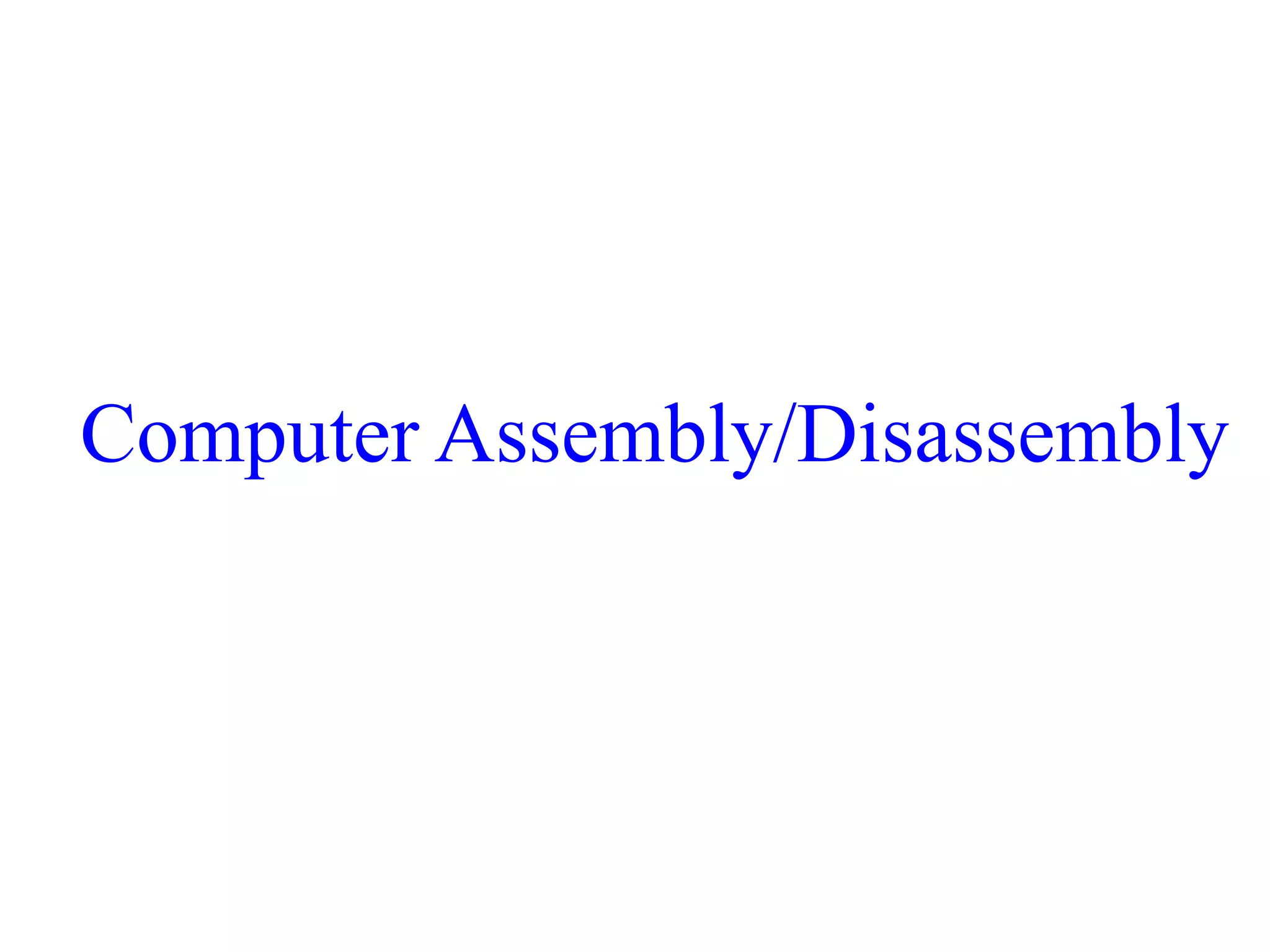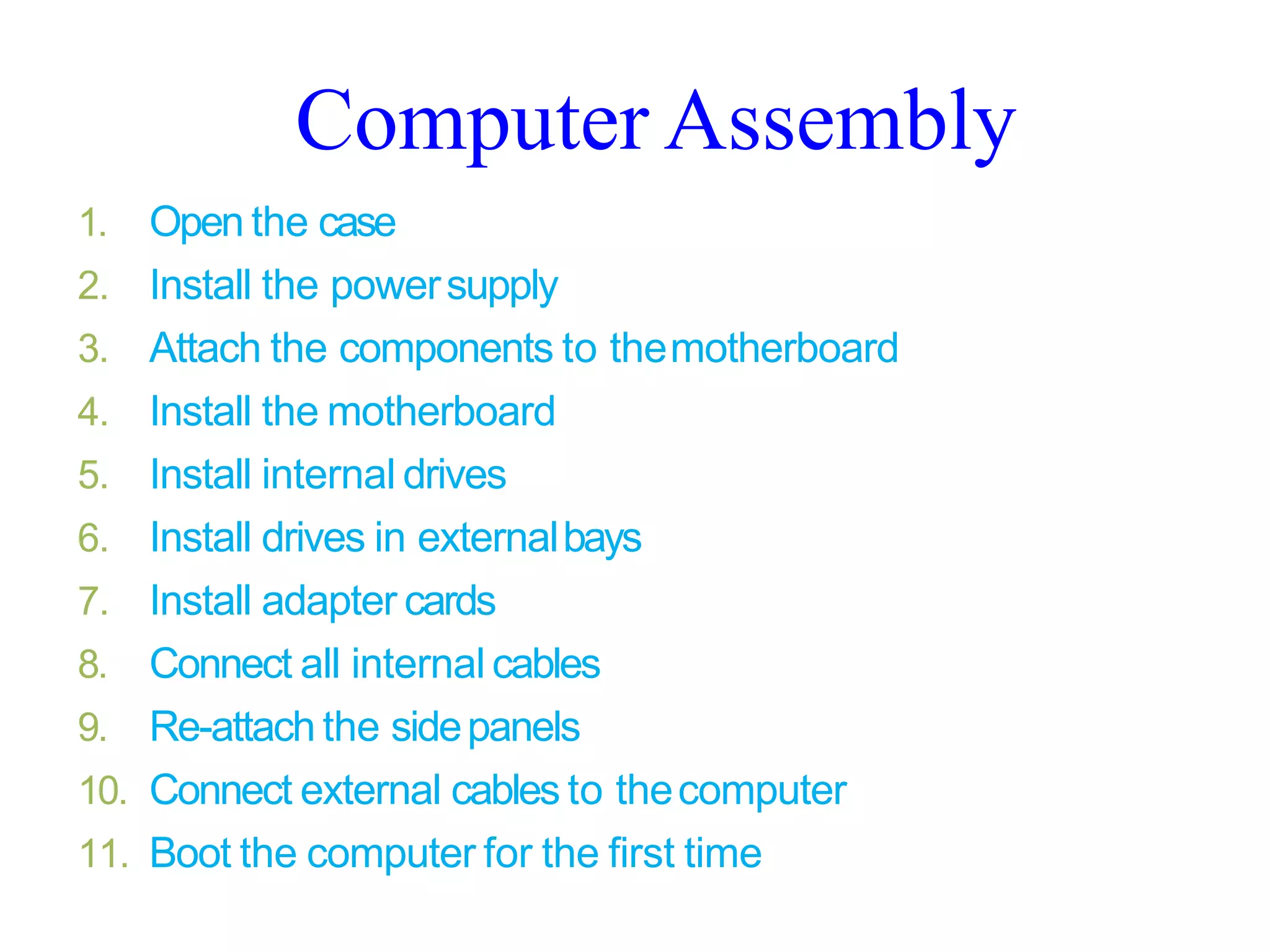The document provides instructions for assembling a computer. It describes opening the case, installing components like the power supply, motherboard, CPU, RAM, drives, adapter cards and connecting internal cables in a logical sequence. Connecting power and data cables correctly is important for the computer to function properly. Following the assembly steps helps technicians build computers methodically.








































